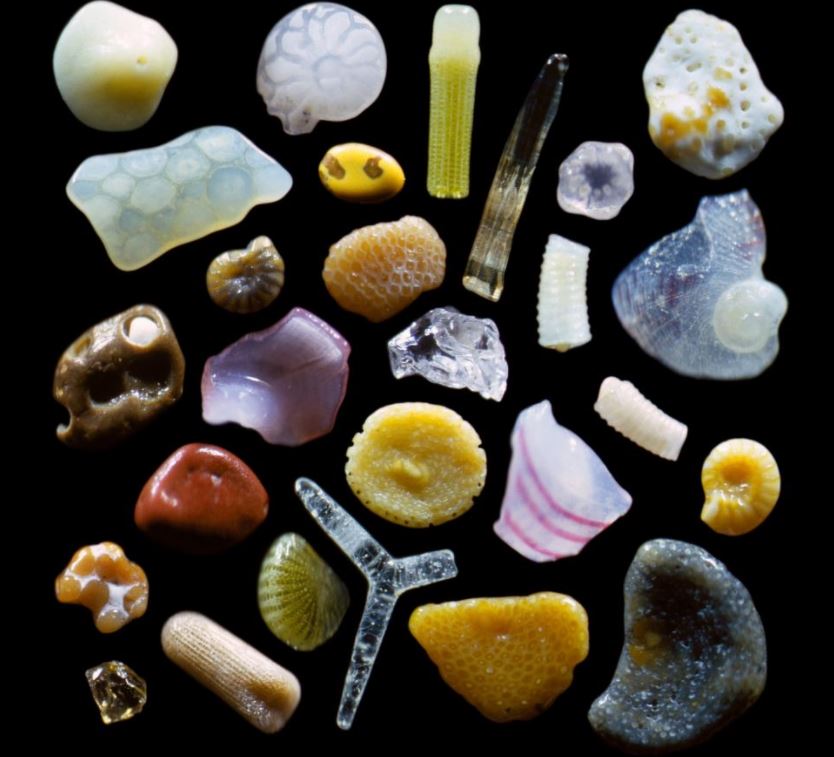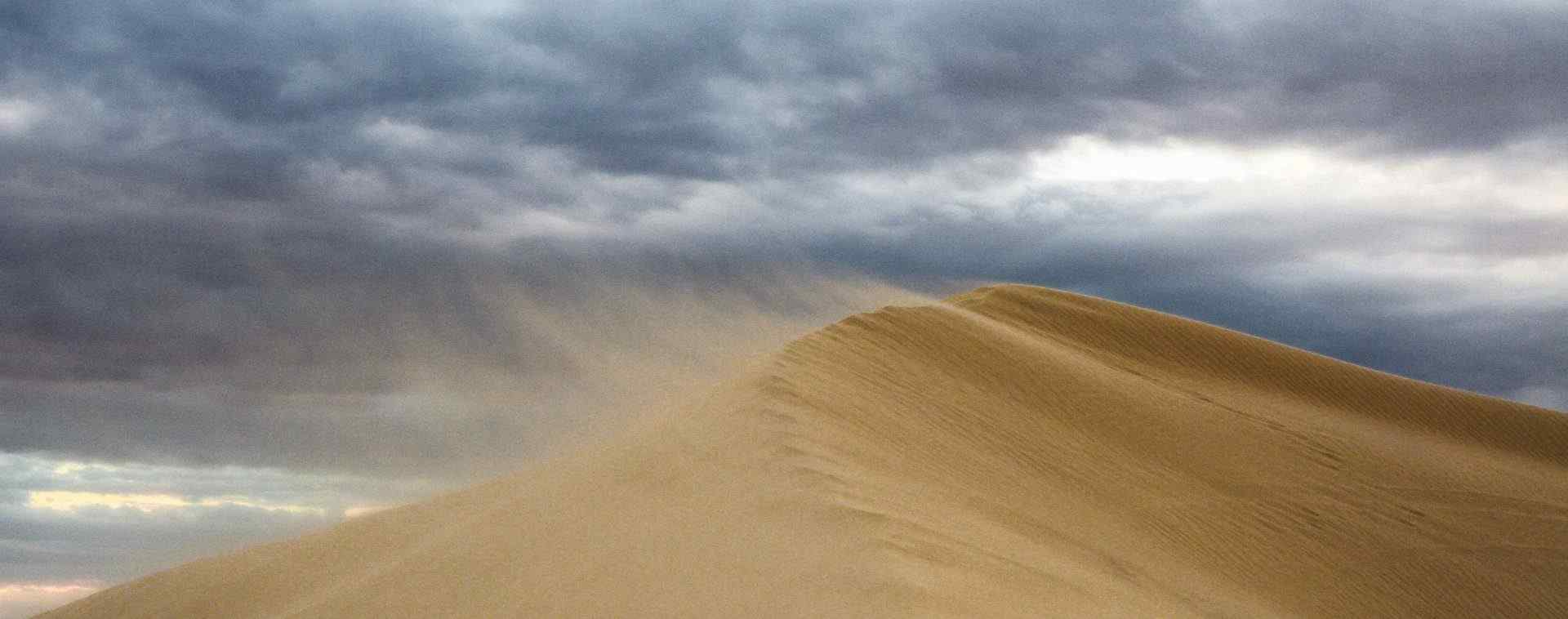Sand in soil
In this post we will cover sand and hopefully by the time we are finished, you will better understand its properties and use cases and adjustments for your growing operations.

Sand is soil in its most basic form. It is the largest and heaviest of soil particle bases. It is naturally occurring, finely granular minerals and bits of rock.
Silicon in soil
Most sand is composed of Silicon, eg Silicon dioxide (SiO2). Itself, silicon is an element typically found in many compound states, which can be both negatively charged and positively charged. This makes it an interesting partner for growers.
Calcium carbonate in soil
Next in line is calcium carbonate (CaCO3), the stuff that deposits in your tea kettle. In terms of its frequency in the sand this is perhaps the second most abundant. Which makes sense right? Since sand is often associated, for me at least, with the sea and calcium carbonate deposits typically originate from seashells and corals, as in the case of aragonite (a crystalline form of CaCO3). Calcium carbonates tend to lean towards a base or alkaline pH and again this means without serious management many plants just don’t grow in Sand alone.
Since pH has consequences for the type of additional life that is favoured, and as it is in these subtle shifts, we find the magic to growing anything. We will later discuss more about the importance of pH in soil management and plant health.
Sand becoming a scarce resource
Sand is not a renewable resource within human time frames and we use lots and lots of it in construction for example, so much in fact that, it´s on its way to becoming a scarce resource. Does this overuse not conflict with its scarcity and renewability and how can its high pH make it a suitable partner for growers?
The traits of sand
Whilst sand is an excellent media to boost drainage, it’s not ideal for many plants as a solo media type. If you want proof of this, go down to the beach and count the number and type of different plants you see actively growing in it.
Part of the quality of sand, on one hand, makes it tricky to live with on another. Its capacity to freely drain water means it can make it difficult to retain the right mix of plant and soil nutrients in and around the root zone of our crops.
People growing in sandy soils, (those where sand % is 85% and higher) often need to use many times more nutrients, especially Nitrogen and Potassium which can get used faster, or be hard to establish due to higher Calcium levels. Where we do use sand as growers is generally to improve water drainage in tough soils, and help reduce issues such as soil compaction, often with great success and limited percentages.
You son of a soil
Sand is basic, basic soil. Think of soil as a right of passage if you like. Where sand is a newborn child, forest soils are the wise old grandparents and we have a range in between.
Given its position in my “journey to adulthood” metaphor, it is no real surprise to find that sand is home to a limited range of plant life in nature. It leans towards a bacterially dominant environment and this is really pertinent since it is more often the supporting biology that determines the eventual level of complexity of life that might exist in any one soil type. In coming posts we will further explain much more about how the ratio of microbiology in soils can determine the complexity and opportunity for soil to support wider forms of life, plants and more.
The life sand supports is as basic as sand itself, and often the plant types we enjoy, are way too complex to be supported in a situation of such limited range. So where we can, we boost sandy soils with lots and lots of organic matter, or we really struggle with diversity and plant choice.
There are some really tricky reasons as to why sand can help reduce soil compaction and thus ease water penetration. These stem around the high content of calcium and its dominance as a divalent ion in the system of Cation Exchange in soils, and its downstream impacts. Again we will cover this in more depth in later blogs as well as why high calcium may mean more nitrogen and how it makes it harder to apply potassium and/or phosphorus in high calcium environments.
Why does sand drain?
Part of the reason sand is so free draining is a lack of humate content. Humates are soil components of balanced vibrant soils, such as those we find supporting the world’s greatest forests.
What are humates?
Humates come from decaying animal, plant and organic matter, often being processed over non-human scale timeframes, via interactions with microbial life. During decomposition, complex organic matter is reduced by microbes in favourable environmental conditions into stable forms of Carbon-based material. These forms, resistant to further decomposition, go on to act to absorb excess water, nutrients, which prevent them simply washing away out of the system, each time it rains or we water our crops.
Humus acts like a giant sponge, soaking and retaining water and passing ions (plant food) from the soil. Even stripping excess ions from soil particles themselves to help prevent overloading.
Over time this activity builds long-term soil fertility and can reduce the impacts of pollution and or fertiliser overuse, helping restore a more natural balance. It acts with the microbes who help generate it, and it supports their ongoing health and presence (these microbes typically being fungus types, but also their surrounding biomes of bacteria).
Together, the soil humates and secretions of microbes, act to join/bind soil particles together into larger forms called aggregates. Over time these aggregates are what we see as soil structure.
Soil aggregates
Aggregates are essentially parts bound together by the activities of soil fungus, who actively reduce past organic matter into humates by pulling all different particle sizes and types of particles together with base organic matter.
This reduced particle collection creates a block of media we call soil, complete with air pockets and trapped water sources as well as all the elements such as the NPK (Nitrogen, Phosphorous and Potassium) range and so on. All of which our plants need to live, plus all of the biological helpers that the plants and system needs to maintain energy.
Because sand lacks the organic matter required to form complex humates, it will never be ideal when it comes to its use a single structure for most plants, nor will it be ideal when it comes to practice and economy since we need to spend more money on it per plant cycle, to retain its best operating range.
It is and should be a vital part of a healthy balanced soil, but where we are stuck with it, is at high percentages. This is why we must use our new understanding of its limitations to overcome them and effect a change for the better.
How to grow Better in sandy soils
Better Organix makes a range of high purity organic humates, these being Bio Balance Media and Bio Balance Foliar. These can be used by growers in high sand zones to boost the efficiency of the media. As discussed, humates help to bind particles, and its this that gives us soil structure and this enables us to store and use added resources like water and plant food, more efficiently.
Both BBM and BBF can be used on all media types, but BBM is particularly effective where there are high levels of sand, and also high levels of calcium. For more information on about Bio Balance Media and Bio Balance Foliar, please the product page visit our store.
Better Organix also makes a range of high power biological inoculants (microbes that promote plant health). Root Better is a highly recommended additive to those growing in higher sand content media types. It is a package of beneficial plant soil fungus types and a plethora of beneficial bacteria which are found in the presence of these mighty soil fungus types in the wild.
Root better can be used to quickly boost populations of soil fungus, further enhancing the quality of transformation in sandy soil zones, increasing the ease of growing and widening the choice of plant types far beyond the usual suspects.
Next we will discuss Silt based soils and uncover the secrets hidden in this often maligned resource. How we can use it as growers to super boost microbial activity, reclaim saline soils and more.
Adios
Andy
Image Credit – Sand Macro Prof. Gary Greenberg

